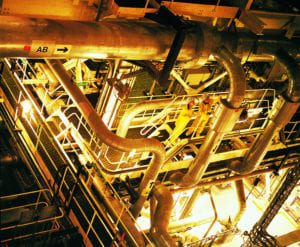A smart city is equipped to increase operational efficiency and the quality of welfare services provided by the government, through the application of information and communications technology. A smart city also provides for an intelligent, clean, and sustainable environment, while also offering a higher quality of life to citizens. Smart city development involves the application of solutions like electronic service mechanisms, real-time power and water monitoring, renewable sources of energy, smart building controls, and intelligent traffic management systems – among many others. Using this technology, the government can interact directly with both the residents and infrastructure of the city. However, various smart city challenges stand in the way of their development.
Financial requirement: Smart city solutions require a lot of funding, which brings forth the question of who will provide this necessary investment.
Data sharing: Most departments involved in city building generally do not effectively coordinate with each other. This disconnect hampers the efficient functioning of any smart solution.
Technology implementation: The process of adopting new-age technological innovations also poses its set of challenges, as there needs to be alignment among multiple stakeholders. Adding features to an existing setup is also a complicated process in itself.
These smart city challenges can be overcome by using the technology of predictive maintenance and automation training. Predictive maintenance allows industries to diagnose any vulnerabilities before they end up causing serious issues, and allows for proactive maintenance of various machines. Using this proactive technology in smart buildings, smart transportation and smart communications would ensure higher levels of productivity by providing early notifications or warnings regarding any potential system error. Proactive maintenance planning also leads to reduced cost and higher returns on investments.
Smart city solutions can also be optimised through automation training. The Industrial Internet of Things (IIoT) has brought a technological wave, complemented by valuable opportunities. With almost every sector becoming automated today, there is a requirement for the workforce to understand how to use this technology. Here, the concept of Human Machine Interface (HMI) comes in handy. HMI software simplifies the interaction between humans and machines. Computer keypads, mobile devices, and a host of other devices allow individuals to communicate effectively with the machine and initiate actions as well. This software is now increasingly being used in all aspects of our daily lives, sometimes without our awareness. This is especially true in the industrial sector because of their higher reliability and improved user efficiency. Thus, training employees in different sectors to provide commands to the machine and understand feedback is imperative in the current scenario. By imparting knowledge on how to operate these machines, the employees will become better equipped to deal with the same. This will allow for optimum utilisation of all assets.
Therefore, a combination of predictive asset analysis and automation training promises to enhance safety in smart cities by accelerating emergency response times and adjusting traffic lights accordingly. The Internet of Things (IoT) connectivity can also be used to improve infrastructure mobility by monitoring public use of facilities. Other applications of IoT technology in smart cities include enhanced methods of surveillance, centralised and integrated control systems, and long-range wireless connectivity.
It is widely speculated that by 2050, about 70% of the world’s population will be living in cities, which mandates the need for smart city development. Smart city programs have various benefits; after their implementation, they lead to reduced spending of public money, increased efficiency of existing resources, improves the quality of services provided, facilitates the adoption of new resources, promotes innovation and social development, and provides for increased transparency of the government and the actions taken by it for the welfare of the people. One example of a smart city is Barcelona, which has implemented smart solutions, particularly in its transit system.



Conversation
IoT is not only changing the way we work, it’s changing the way we live. The more people count steps on a Fitbit or Apple Watch, track their rides on Strava, and otherwise monitor their health and lifestyle, the easier it will be to apply PdM to other aspects of our lives. This will allow us to live smarter, healthier, and more efficient lives.
The recommendation I intended is to use more predictive maintenance using condition monitoring. RCM is a superb methodology that should continue to be used. Thank for great article!